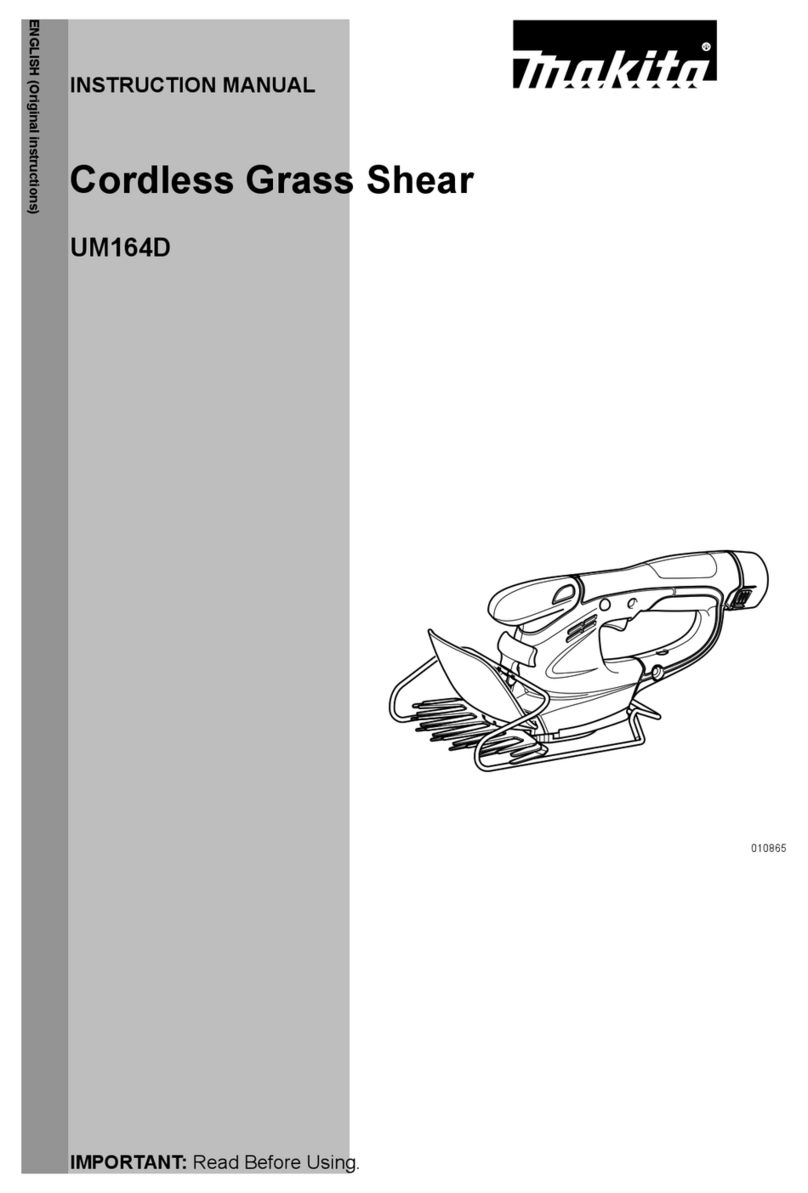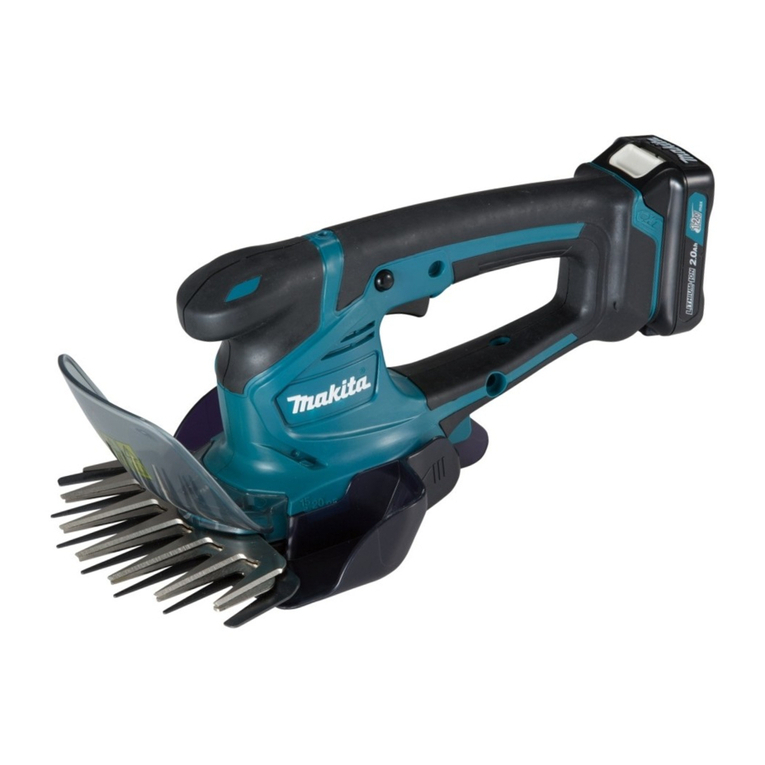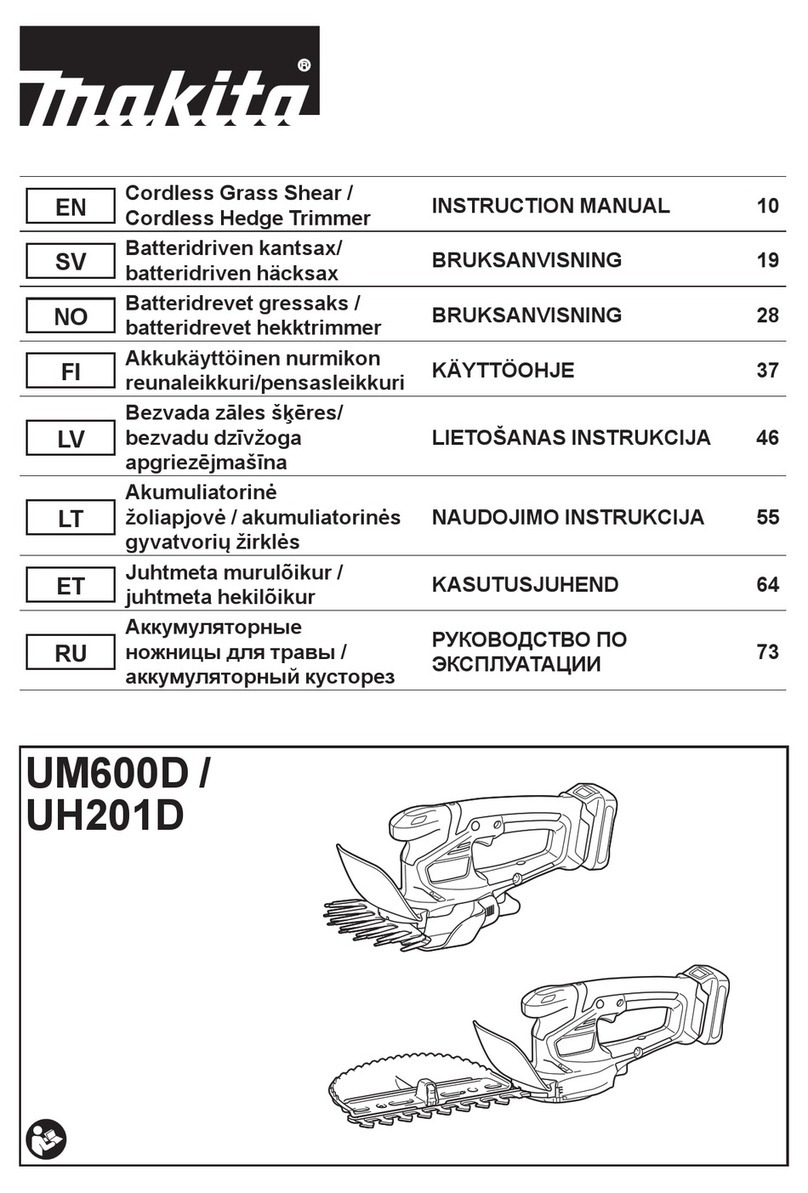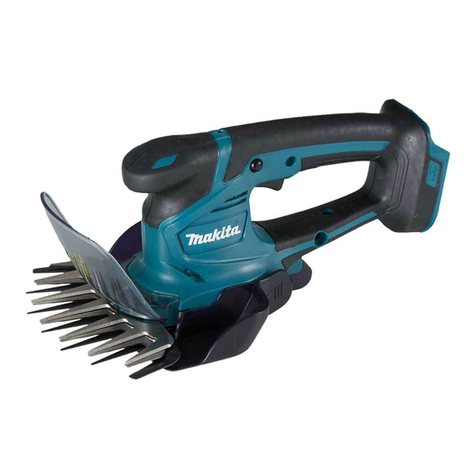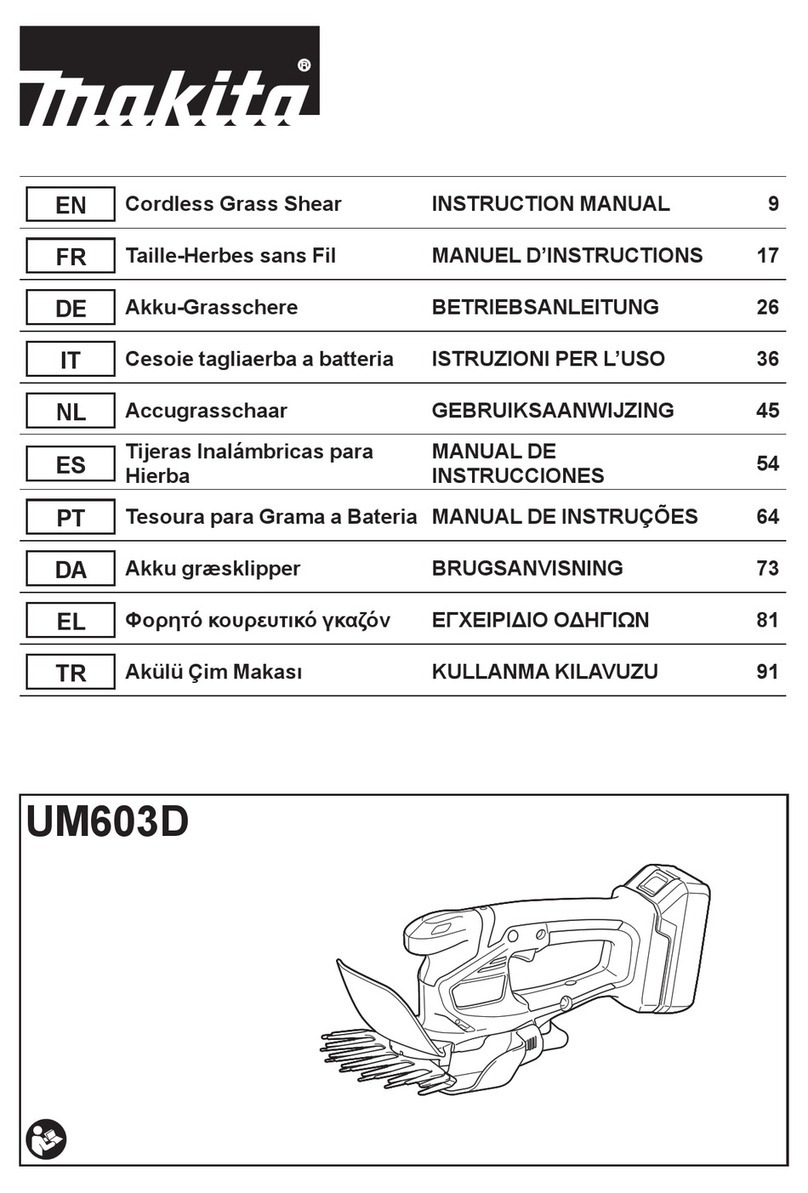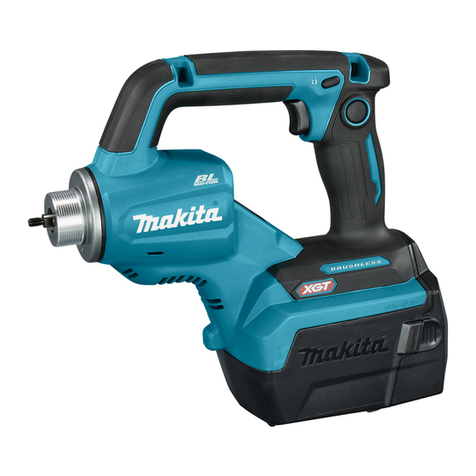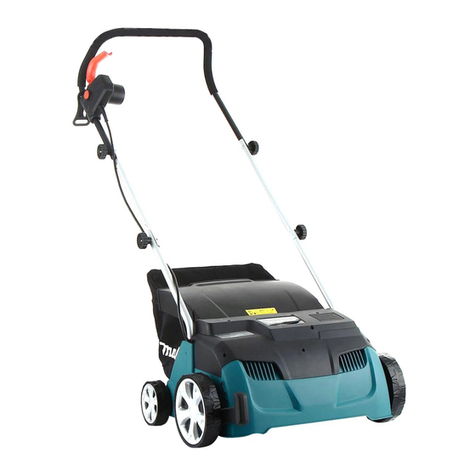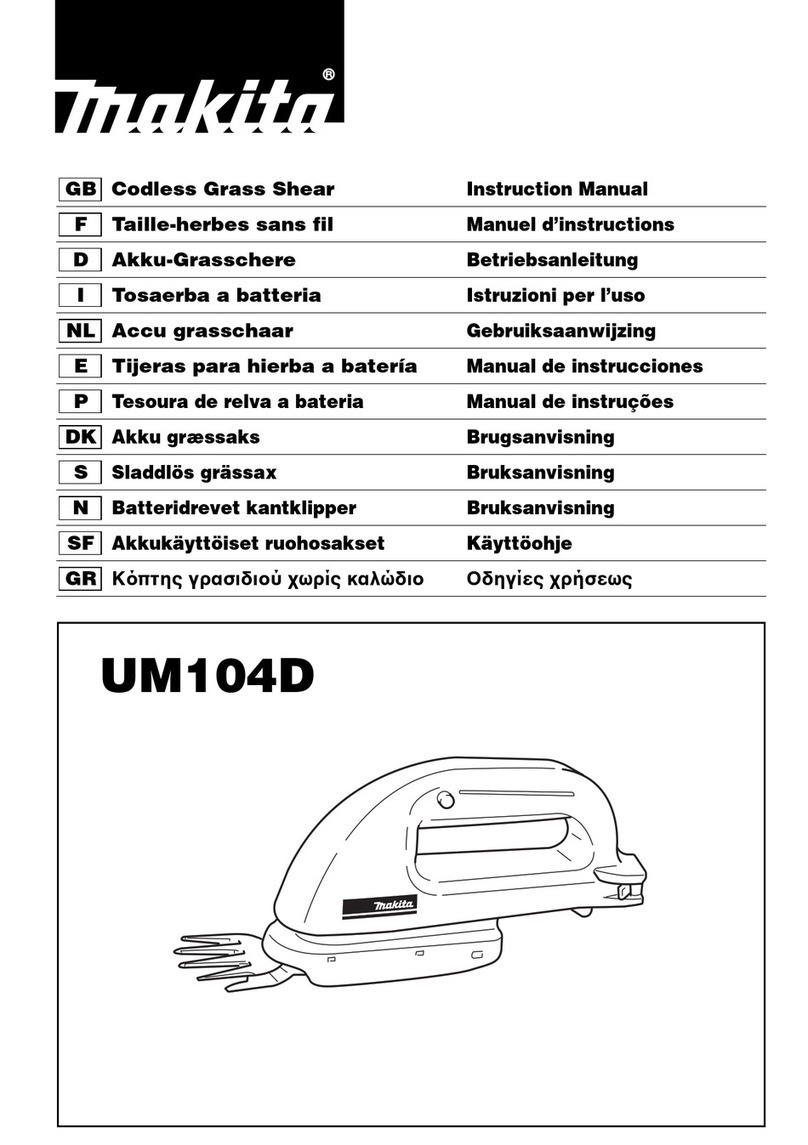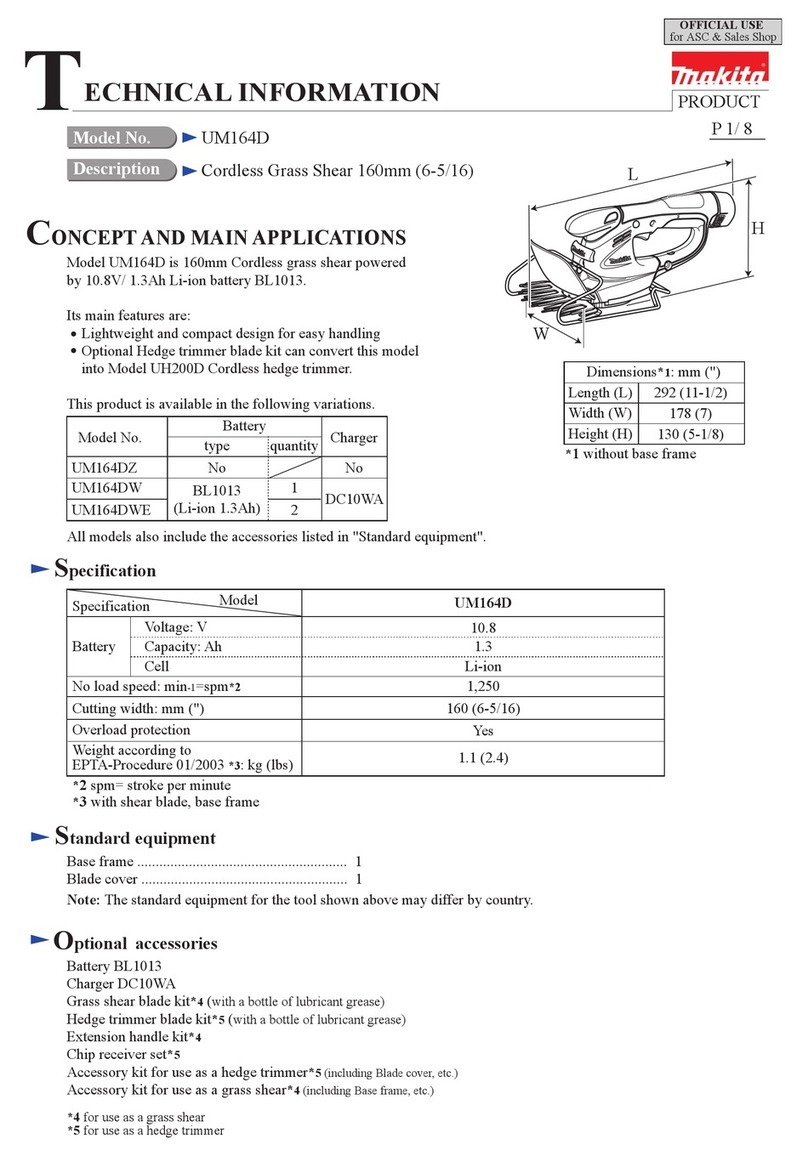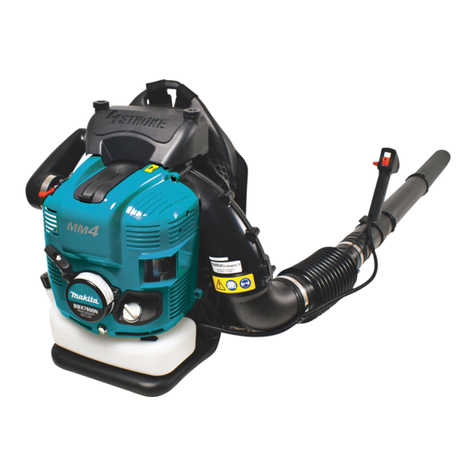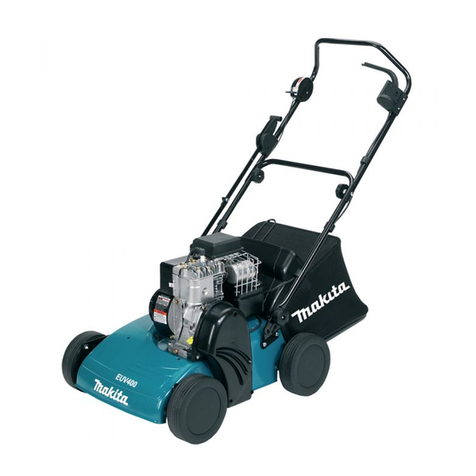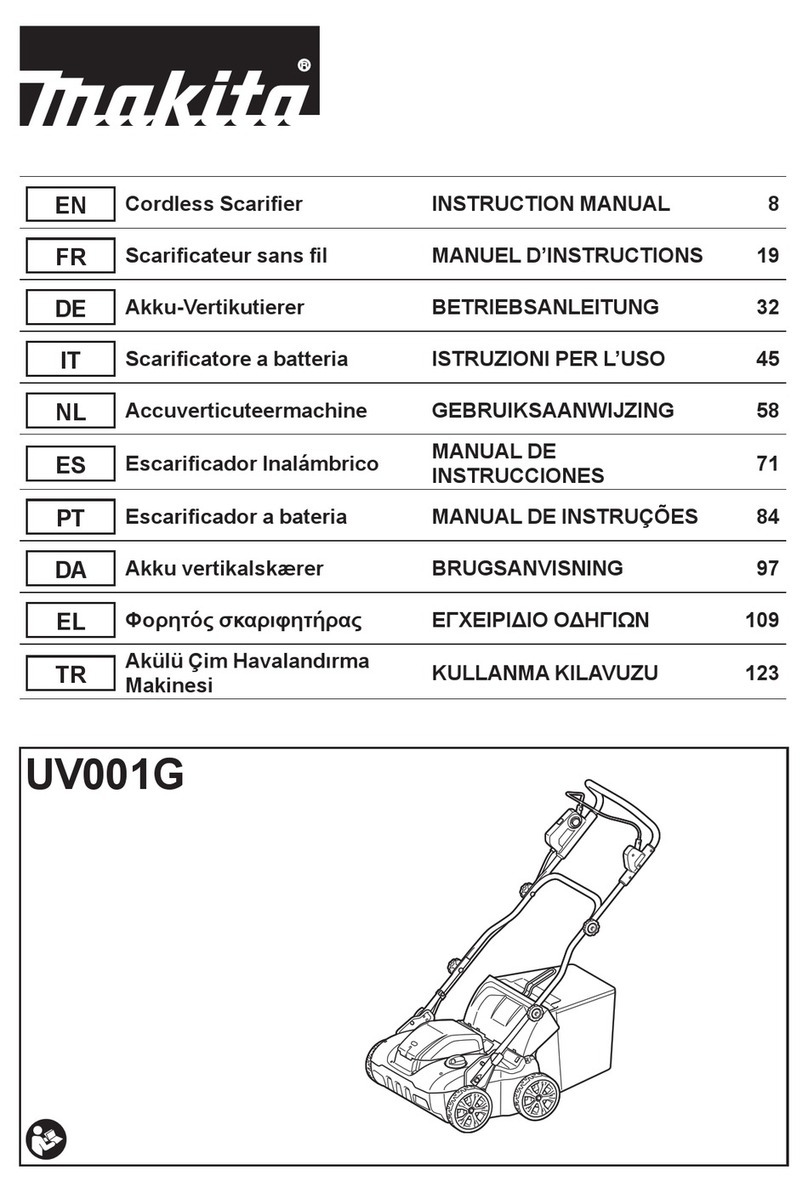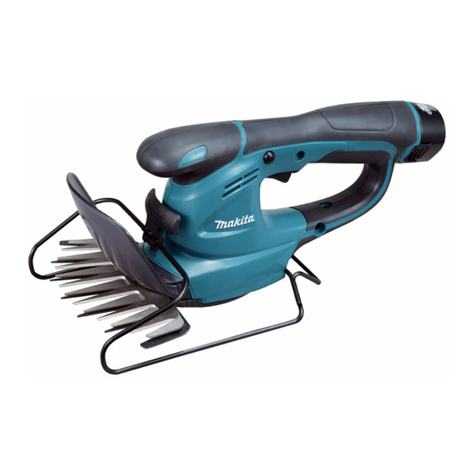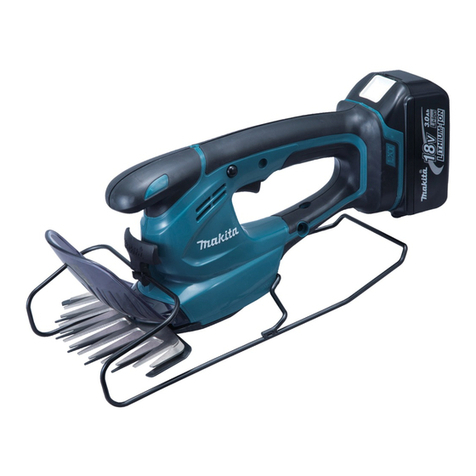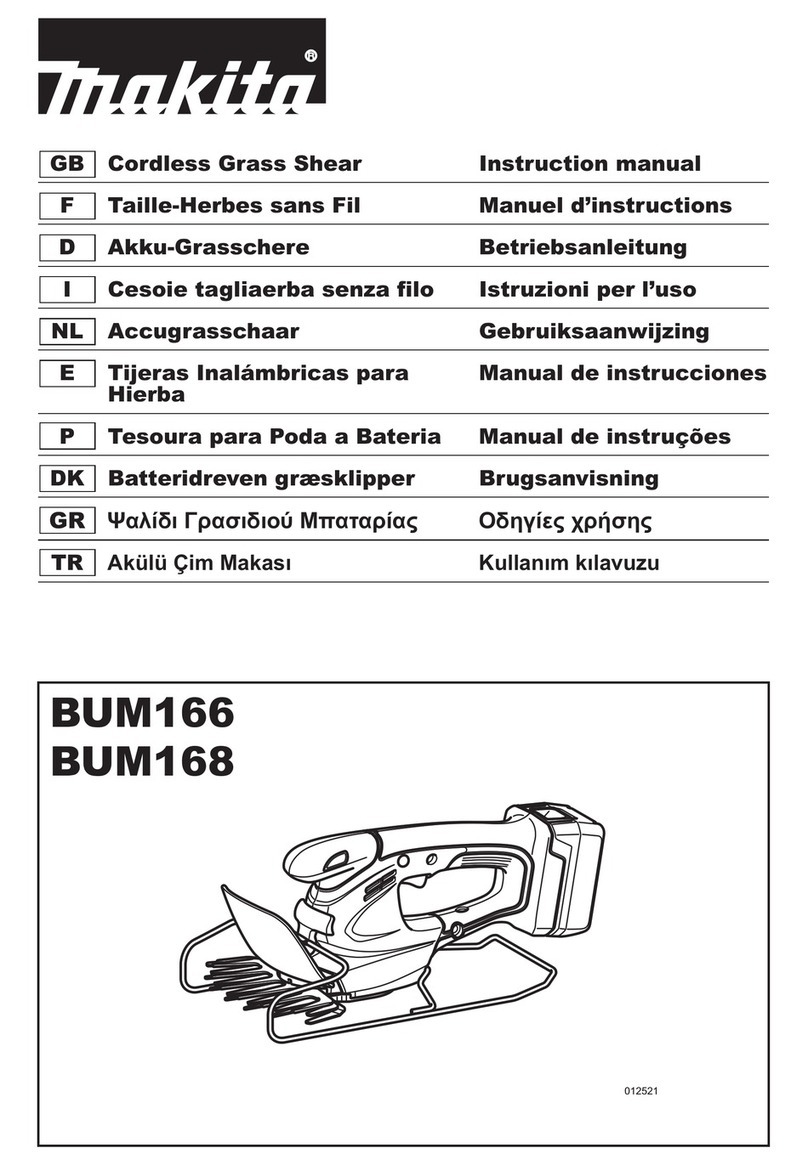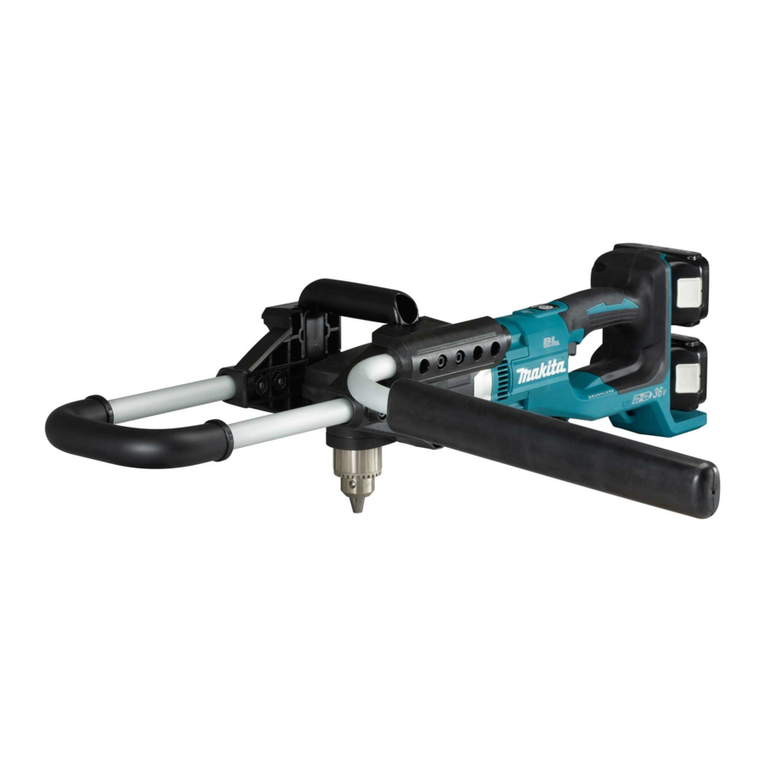
5ENGLISH
6. Hold the front handle with the left hand and the
rear grip with the right hand, no matter you are
and thumbs around the handles.
7.
Never attempt to operate the machine with one hand.
Loss of control may result in serious or fatal injury.
To reduce the risk of injuries, keep your hands and
feet away from the brushes or sweep drums.
8. When operating, do not raise the brushes or
sweep drums above waist height.
9. The brushes or sweep drums continue to move
for a short period after releasing the throttle
to contact the brushes or sweep drums.
10.
Do not overreach. Keep proper footing and balance
at all times. Watch for hidden obstacles such as
tree stumps, roots and ditches to avoid stumbling.
11. Use extreme caution when reversing the brush
or sweep drum rotation or pulling the machine
toward you. If the power unit has reverse
rotation function, do not use it more than
necessary. When operated in reverse rotation,
brushes or sweep drums are on the ground.
12.
Do not overload the machine capacity by
attempting to push too hard at too fast a rate. The
machine will do better work when used with proper
13. Do not accelerate the motor with the brushes
or sweep drums blocked. It increases the load
and will damage the machine.
14.
If the machine gets heavy impact or fall, check
the condition before continuing work. Check
the fuel system for fuel leakage and the con-
trols and safety devices for malfunction. If there
is any damage or doubt, ask our authorized
service center for the inspection and repair.
15. Do not touch the gear case. The gear case
becomes hot during operation.
16.
Take a rest to prevent loss of control caused by fatigue.
17. When you leave the machine, even if it is a
remove the battery cartridge. The machine unat-
unauthorized person and cause serious accident.
18.
Follow the instruction manual of the power unit
for proper use of the control lever and switch.
19. During or after operation, do not put the
hot machine onto dry grass or combustible
materials.
20. If the brushes or sweep drums catch foreign
spark plug cap or battery cartridge, and then
remove the obstructions.
21. Keep your hands and feet clear of the brushes
or sweep drums. Contacting the brushes or
sweep drums can result in serious injury.
When handling the brushes or sweep drums,
stop the motor and remove the spark plug cap
or battery cartridge.
22. Check the brushes or sweep drums frequently
during operation for cracks or damages.
23.
-
tery cartridge when removing debris or foreign
objects from the brushes or sweep drums.
24. Refer to the instruction manual of the power
unit for how to start and control the machine.
Vibration
Exposing to excessive vibration injures blood vessels
or nervous system of the operator and causes the
“Falling asleep” (numbness), tingling, pain, stabbing
sensation, alteration of skin color or of the skin. If any
of these symptoms occur, see a physician.
your hands warm during operation and well main-
tain the machine and accessories.
Maintenance
1.
Before doing any maintenance or repair work or
and remove the spark plug cap or the battery car-
tridge. Wait until the motor gets cold.
2.
3. Always wear protective gloves when handling
the brushes or sweep drums.
4.
use gasoline, benzine, thinner, alcohol or the like for
the purpose. Discoloration, deformation or cracks of
5. After each use, tighten all screws and nuts,
except for the carburetor adjustment screws.
6. Replace the brushes or sweep drums if they
are damaged.
7. Do not attempt any maintenance or repair not
described in this booklet or the instruction
manual of the power unit. Ask our authorized
service center for such work.
8. Follow instructions for lubricating and chang-
ing accessories.
9. Always use the genuine spare parts and acces-
sories only. Using parts or accessories supplied
-
10.
Request our authorized service center to inspect
and maintain the machine at regular interval.
